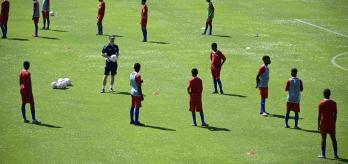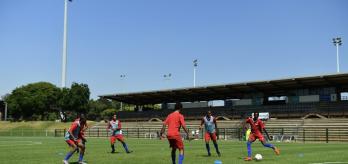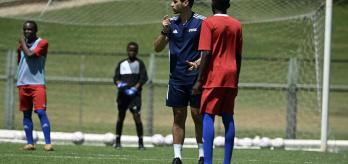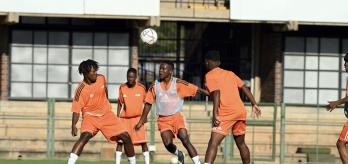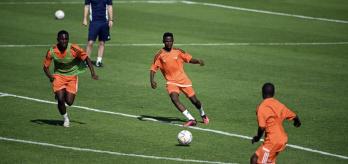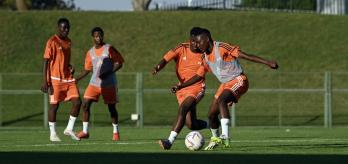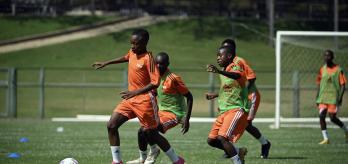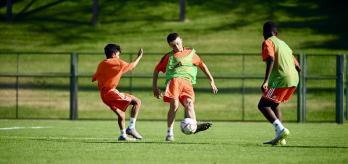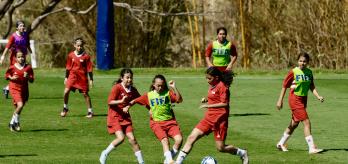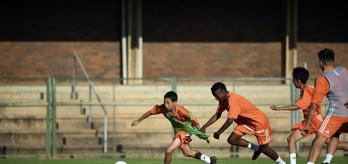Methodology
The intention: What is practised?
The objective of the exercise is to enhance the players’ ability to build and progress play within a very narrow game focus. Other aspects, such as creating and finishing attacks and transitioning and defending, do not feature in this particular exercise. The drill focuses specifically on individual player actions, including taking up positions between defenders, adopting the right body orientation in relation to the direction of play and refining receiving techniques. The sequence simulates the build-up from defence, through midfield and into attack and can be applied in various game scenarios, including attacking against high, mid- or low blocks.
The scale: For whom is this relevant?
The passing circuit revolves around the player, with a particular focus on the receiving player. The nature of the exercise allows the players to develop their skills when offering between the lines and subsequently progressing play forwards. The circuit is particularly relevant to players operating inside the opposition’s shape, such as centre-midfielders or forwards. In addition to individual skills, effective communication between the passer and receiver is crucial in this exercise. The drill expands the focus from the individual player to the unit level, with two players forming a vertical passing line.
The practice type: How is this practice designed?
The drill involves an unopposed passing circuit that focuses on constant repetition to provide ample opportunities for players to practise offering, receiving and passing. Variations are introduced to showcase various options when offering between the lines, thereby enhancing the players’ understanding of the tactical scenario. Making the exercise unnopposed allows for emphasis to be placed on the execution of technique, with less focus on awareness and decision-making. Mannequins are used to provide visual orientation for the players. The exercise is non-position-specific, with all players rotating positions and being asked to perform the same tasks.
Session plan
Organisation
-
On one half of the pitch, create 2 circuits as shown
-
Split the group equally into 2 and position a player per cone and 1 inside the area.
Explanation
-
A begins the sequence by passing to B.
-
B takes a touch before playing a pass to C, who occupies a starting position between and just behind the top 2 mannequins in the square formed by the 4 mannequins.
-
C receives the ball side-on and passes the ball to D.
-
D takes a touch and plays a pass to E, who drives towards the single mannequin, behind which F is positioned.
-
F pulls wide of the mannequin to create space in which to receive the short pass from E and receives side-on before completing the sequence with a pass to A.
-
All players follow their passes.
Variation
-
Variation 1: the exercise is performed with 2 balls in rotation (1 sequence begins with A and the other with E).
-
Variation 2: C drops in to receive the ball between the mannequins from a starting position at the far end of the square formed by the 4 mannequins.
-
Variation 3: C can choose between drifting and dropping in to receive between the lines.
-
Variation 4: Depending on F’s movement, E either plays a one-two with F, who has made a short run in front of the mannequin, followed by an along-the-ground pass to A or a one-two followed by a lofted pass to A.
Key coaching points
Role of the coaches
-
First coach: leads the session by demonstrating the passing sequence and the movements to be performed by each player at the respective stations. The coach focuses heavily on demonstrating movements such as “drifting” and “dropping in” between the lines.
-
Second coach: checks and corrects player movements in the second circuit to ensure that the players are performing the movements correctly.
-
Third coach: coaches the players performing the movement from the blind side of the single mannequin (F) to ensure that the players adopt the correct body shape when receiving the ball.



























